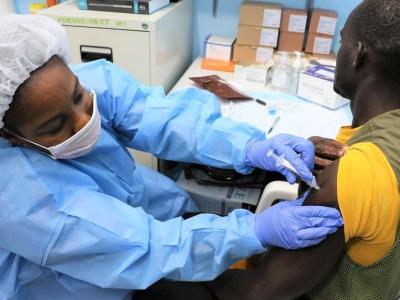May 3, 2012
WHO confirms Indonesian child's H5N1 death
The World Health Organization (WHO) yesterday confirmed the death of a 2-year-old Indonesian boy from H5N1 avian flu that the country's media reported several days ago. The boy, from Riau province, developed a fever Apr 17, was hospitalized Apr 21, and died on Apr 27. His parents sell quail eggs, the WHO report said. Indonesia's Ministry of Health confirmed the case. Of the 189 H5N1 cases confirmed in Indonesia since 2005, 157 (83%) have been fatal. The nation leads the world in both H5N1 cases and deaths, and all six of the country's cases this year have been fatal. The global WHO H5N1 count has now reached 603 cases, including 356 deaths.
May 2 WHO report
May 2 WHO global H5N1 case count
Group weighs challenges of estimating EU flu deaths
European flu surveillance experts today said it's difficult to pin down an estimate of overall morality of the 2009 H1N1 pandemic in the region, because countries don't yet have common methods. In sketching out in Eurosurveillance the strengths and weaknesses of different systems to assess seasonal and pandemic flu mortality burden, they wrote that methods based on death certificates and lab confirmations lead to underestimates, especially in older people. EU member states reported 2,900 lab-confirmed deaths, which should be considered a minimum number, they wrote. On the other hand, population-based methods based on statistical and modeling techniques can be more imprecise and would benefit from ways to account for confounding factors, such as other respiratory viruses and climate conditions. They observed that special reporting systems used in the United States and Australia that assess the impacts on specific groups, such
as children, are useful for guiding vaccination policies. Classical statistical methods that incorporate historical data aren't as useful for pandemics, because out-of-season baselines are tough to determine. A new pilot project called the European Mortality Monitoring Project (EuroMOMO) that incorporates age-specific mortality shows promise as a more sensitive approach. It found that all-cause mortality for the 2009 H1N1 pandemic was similar to seasonal flu, but suggested a short-term increase in mortality among children ages 5 to 14 years. They said mortality projections are useful for pandemic planning, but health officials should communicate them carefully to avoid misperceptions by the media or public. The EuroMOMO project, which includes 10 countries, is a good start at standardizing systems, the group concluded, adding the system could be enhanced by incorporating cause-specific data and a way to control for confounders.
May 3 Eurosurveill report
Seasonal flu vaccine prompts antibodies against 1918 virus in ferrets
A study of how well the 2010-11 seasonal flu vaccine protected ferrets against the 1918 pandemic virus showed that it induced antibodies against the virus, a finding that could be useful when planning protection for lab workers and the public in the event of a biological attack with or lab escape of the former pandemic virus. A team led by CDC researchers injected ferrets three times with a human dose of seasonal flu vaccine or a control, then challenged them with the 1918 virus, the Perth H3N2 virus, or the 2009 H1N1 virus 5 to 8 weeks after the final dose. They found that the seasonal flu vaccine induced cross-neutralizing antibodies against the 1918 virus and reduced morbidity and virus shedding compared with the control animals. The findings were similar to a vaccine trial that showed that the monovalent 2009 H1N1 vaccine induced cross-reactive antibodies to the 1918 virus in humans. The group concluded that,
although more human serology data are needed about cross-reactive antibodies to the 1918 virus, preexisting immunity to the former pandemic virus is likely to increase due to vaccination and infection with the 2009 H1N1 virus.
May 2 J Virol abstract


















